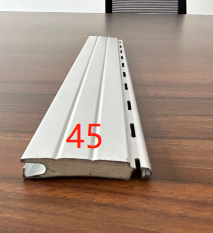
Understanding Downpipe Roll Forming Machines and Crimping Machines
In the realm of modern manufacturing, efficiency, precision, and versatility are paramount. Among the machines that meet these demands are the downpipe roll forming machines and crimping machines. These specialized pieces of equipment are essential for producing high-quality downpipes, which are crucial components in various drainage systems and applications.
Downpipe Roll Forming Machines
Downpipe roll forming machines are designed to create metal downpipes from steel or aluminum strips. These machines operate by feeding flat metal strips into a series of rollers, which progressively shape the material into a pipe form. The roll forming process is not only economical but also produces pieces with excellent dimensional accuracy and surface finish.
Advantages of Downpipe Roll Forming Machines
1. High Production Efficiency The continuous nature of the roll forming process allows for high-speed production, significantly minimizing lead times.
2. Material Conservation Roll forming works with metal strips, minimizing material waste compared to traditional cutting methods. The precision of the forming process also reduces the loss of material during production.
3. Customizable Shapes and Sizes Manufacturers can easily customize the design of downpipes to meet specific client demands. Adjustments can be made to the machine setup to produce various diameters and lengths of downpipes.
4. Durability and Strength The process of cold forming helps enhance the mechanical properties of the metal. The resulting downpipes boast increased strength and resistance to wear.
Crimping Machines

While downpipe roll forming machines are focused on creating the pipes themselves, crimping machines play a critical role in the production process by providing a method of joining or altering the shape of the downpipes. A crimping machine is designed to deform the ends of the pipe, enabling fittings to be attached securely or creating an overlap that aids in connection and sealing.
The Crimping Process
Crimping machines utilize a series of jaws or dies that apply force to the pipe, creating a uniform and controlled deformation at specific points. This process ensures a tight joint that can withstand the pressures and stresses of fluid flow in drainage systems.
Key Benefits of Crimping Machines
1. Enhanced Connection Strength The deformation created by crimping provides a robust seal that is less prone to leaks compared to other methods of joining pipes, such as welding or soldering.
2. Versatility Crimping machines can be adjusted to work with various pipe sizes and types, allowing for flexibility in production. This adaptability is crucial for manufacturers handling diverse client needs.
3. Improved Aesthetics Pipes that have been crimped often have a cleaner appearance than those that have simply been cut and joined. This can be especially important in residential applications or visible installations.
4. Increased Safety Crimped joints are less likely to fail under pressure, offering an additional layer of safety in applications where leaks could lead to significant issues.
Conclusion
In an industry where efficiency and quality are non-negotiable, downpipe roll forming machines and crimping machines stand out as essential tools for manufacturers. Together, they contribute to a streamlined production process that results in durable, reliable, and well-finished downpipes that meet the rigorous demands of modern drainage systems.
The advancement of technology in manufacturing has made it easier to customize products, reduce waste, and increase production speeds. As industries continue to evolve, the importance of machines that offer both precision and versatility, like the downpipe roll forming machine and crimping machine, will undoubtedly grow. This evolution signifies a promising future for manufacturing sectors focused on infrastructure and construction, ultimately providing consumers with superior products that are built to last.